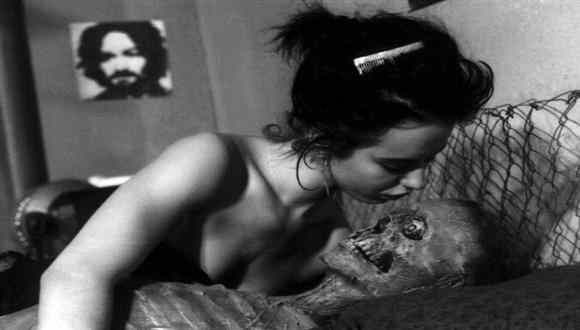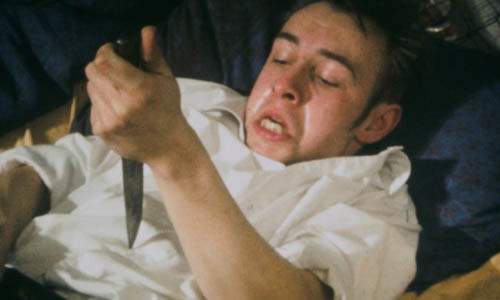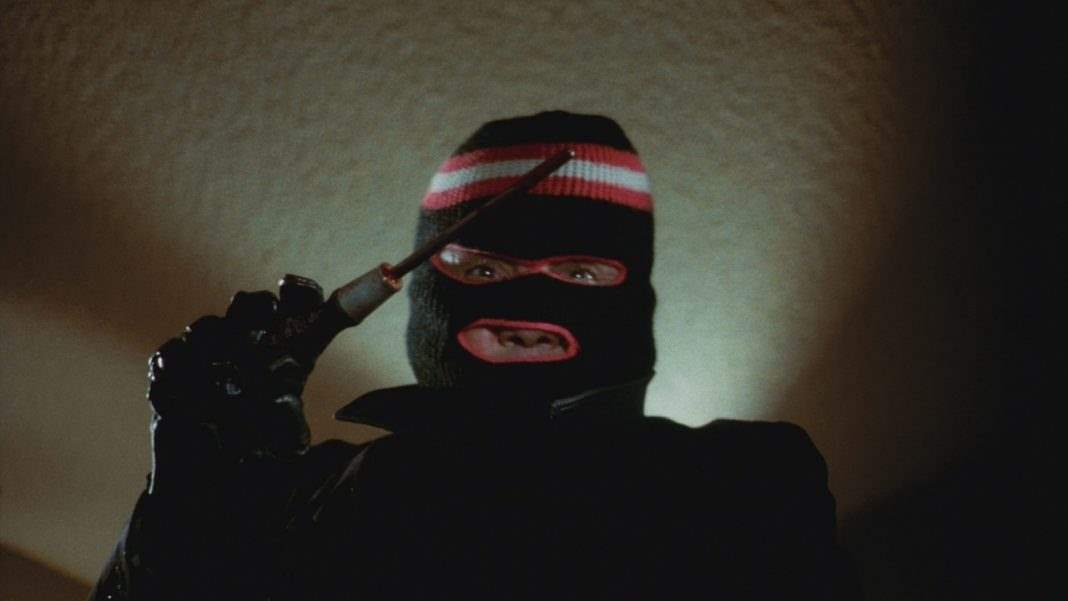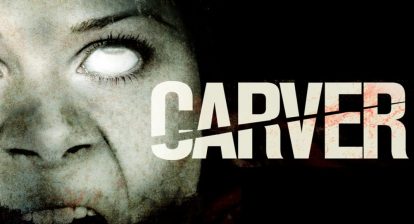The ‘70s and ‘80s were a time when horror was focused heavily on pushing boundaries, especially in the foreign market. Films like Cannibal Holocaust, Cannibal Ferox, Salome and most of the Lucio Fulci filmography were designed specifically to go beyond the limits of good taste. They were crafted with the intent of being disturbing and shocking, an extreme movement in horror that is certainly not for everyone—or really anyone but the most strong-stomached viewers.
Nekromantik is often lumped in with these, for reasons that appear obvious on the surface. The title shows how extreme it is. It’s about necrophilia, through and through, with lots and lots of other violence thrown in. But here’s what separates it from other features commonly referred to as some of the most shocking ever made: titles like Cannibal Holocaust are intending to go as far as they could possibly go. As great as that film is, it was made to capitalize on the shock factor. Nekromantik is actually the opposite. It pretends as if there is absolutely nothing wrong with what you’re seeing. Everything is portrayed as if it’s the most normal thing in the world.
Ultimately, that’s what Nekromantik is about. The necrophilia, the death, the fetish for internal organs… all of these are shocking, of course, but they’re simply a part of everyday life for the main character. The film goes to that extreme to prove a point, which is to simply embrace weirdness in general. Obviously people shouldn’t do anything that Rob, our main character, does throughout any point in the film. But there’s still an element of pointing out that people who are, well, let’s say outside the mainstream can still find someone who will accept them for who they are. Rob has that for the first portion of the feature. He has a girlfriend who shares all of his interests, which is a rare thing for someone with tastes as eccentric as his.

Nekromantik is an exploration of cultural nihilism. While most characters undergo a journey to find and better themselves as a human being, Rob is looking for reasons not to live. He’s working a day to day, dead end job and seeking whatever enjoyment he can take from it by bringing body parts—and one whole body—home with him. That’s all he really has in his life, and he shares it with someone special, and when she leaves him there’s really nothing for him anymore. This is the study of someone’s severe existential crisis, and we’re watching it unfold entirely through his perspective. Whatever’s happening on the screen, whether it “really happened” or not, Nekromantik basically takes place entirely inside Rob’s head.
There’s also a statement within the film on violence in cinema as a whole. The only violence we see that’s truly mean spirited, outside of Rob killing the cat, is the movie Rob goes to see by himself. It’s supposed to be a standard horror film, and while it’s campy, this flick he’s watching, it’s also voyeuristic with a strong element of implied rape. These aren’t issues that the rest of the movie has. The violence of Nekromantik as a whole is much sillier, for the most part. What makes this movie theater scene even more interesting are the reactions we see from the audience. They’re seeing something brutal on the screen and they’re either bored or getting off on it. Even the critic perks up as soon as the violence turns sexual. These aren’t even people like Rob, these are supposed to be the “normal” people turning out to see the feature.
 The theater scene is really important to the movie because it perfectly showcases a desensitization to even the most extreme bloodshed. Because by that point in the ‘80s, people had seen just about everything. Nekromantik tries to show them that maybe they haven’t seen it all, but also explores the idea that if you’re desensitized to violence, you try to push boundaries and find new activities to be excited by. It’s the same for the general horror audience, and I think that’s what Jorg Buttgereit was trying to say. It’s such a part of Rob’s everyday life because, metaphorically, it was for a lot of people. Rob embodies an emptiness that’s typical of the jaded horror fan who feels like there’s nothing left to see and nowhere left to go.
The theater scene is really important to the movie because it perfectly showcases a desensitization to even the most extreme bloodshed. Because by that point in the ‘80s, people had seen just about everything. Nekromantik tries to show them that maybe they haven’t seen it all, but also explores the idea that if you’re desensitized to violence, you try to push boundaries and find new activities to be excited by. It’s the same for the general horror audience, and I think that’s what Jorg Buttgereit was trying to say. It’s such a part of Rob’s everyday life because, metaphorically, it was for a lot of people. Rob embodies an emptiness that’s typical of the jaded horror fan who feels like there’s nothing left to see and nowhere left to go.
The film is gross and sincere. It’s fully commits to being both and that’s the whole point. But Nekromantik is not a jaded movie, which is an important distinction to make. It deals very much with nihilism, but it is at its core a romantic comedy. It’s gross, outrageous and obscene, but that only makes it funnier. It should not be categorized with pictures like Cannibal Holocaust and I Spit on Your Grave, it belongs to the same class of gross-out comedy as Re-Animator and Braindead. Even if it goes further, even if it can be very uncomfortable, that humor is always there at the core. This is one man’s love affair with death, making love to corpses to get himself closer and closer to understanding mortality, until he can arrive at the end to exactly where he had wanted to be all along: in the ground.







